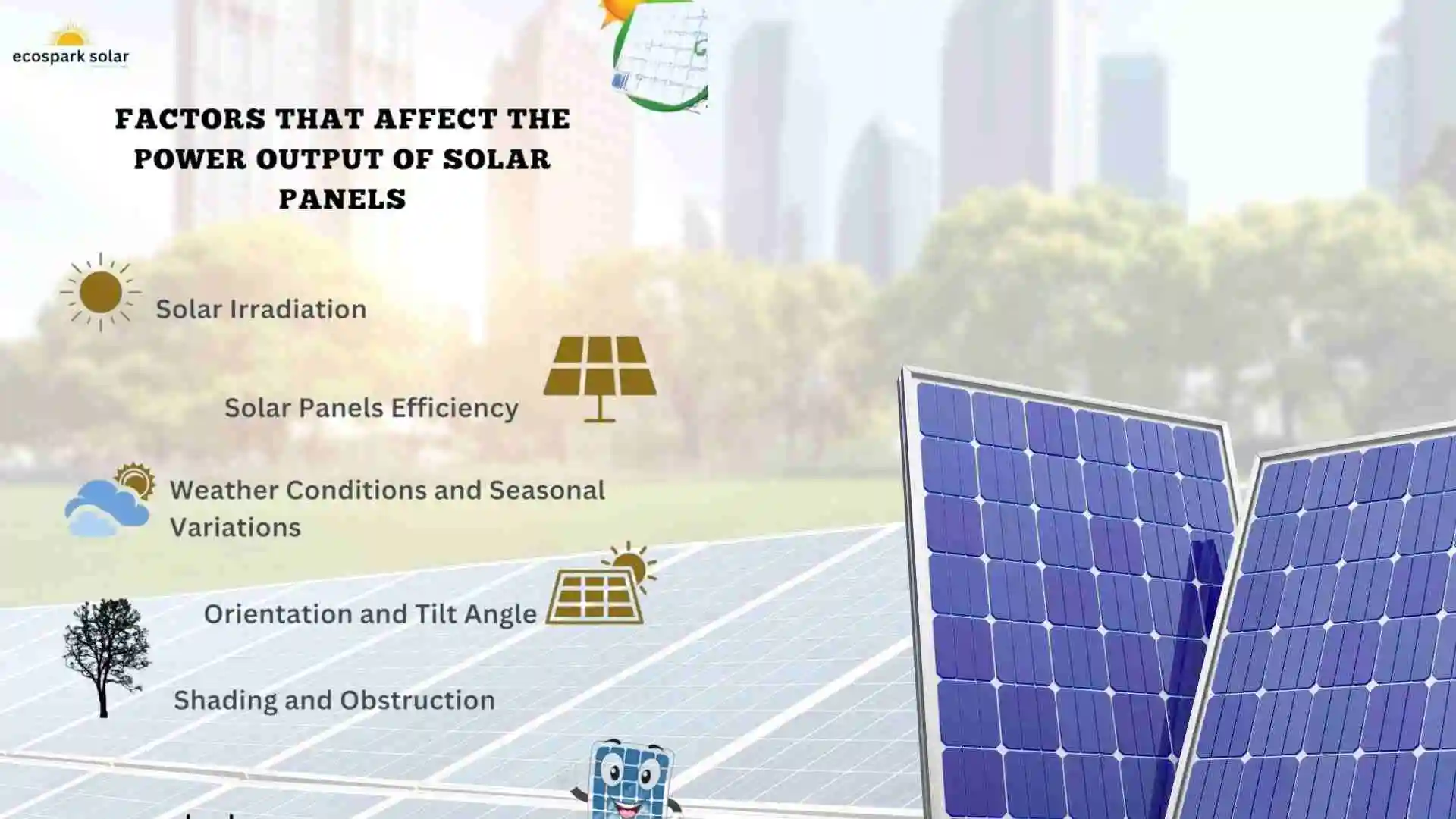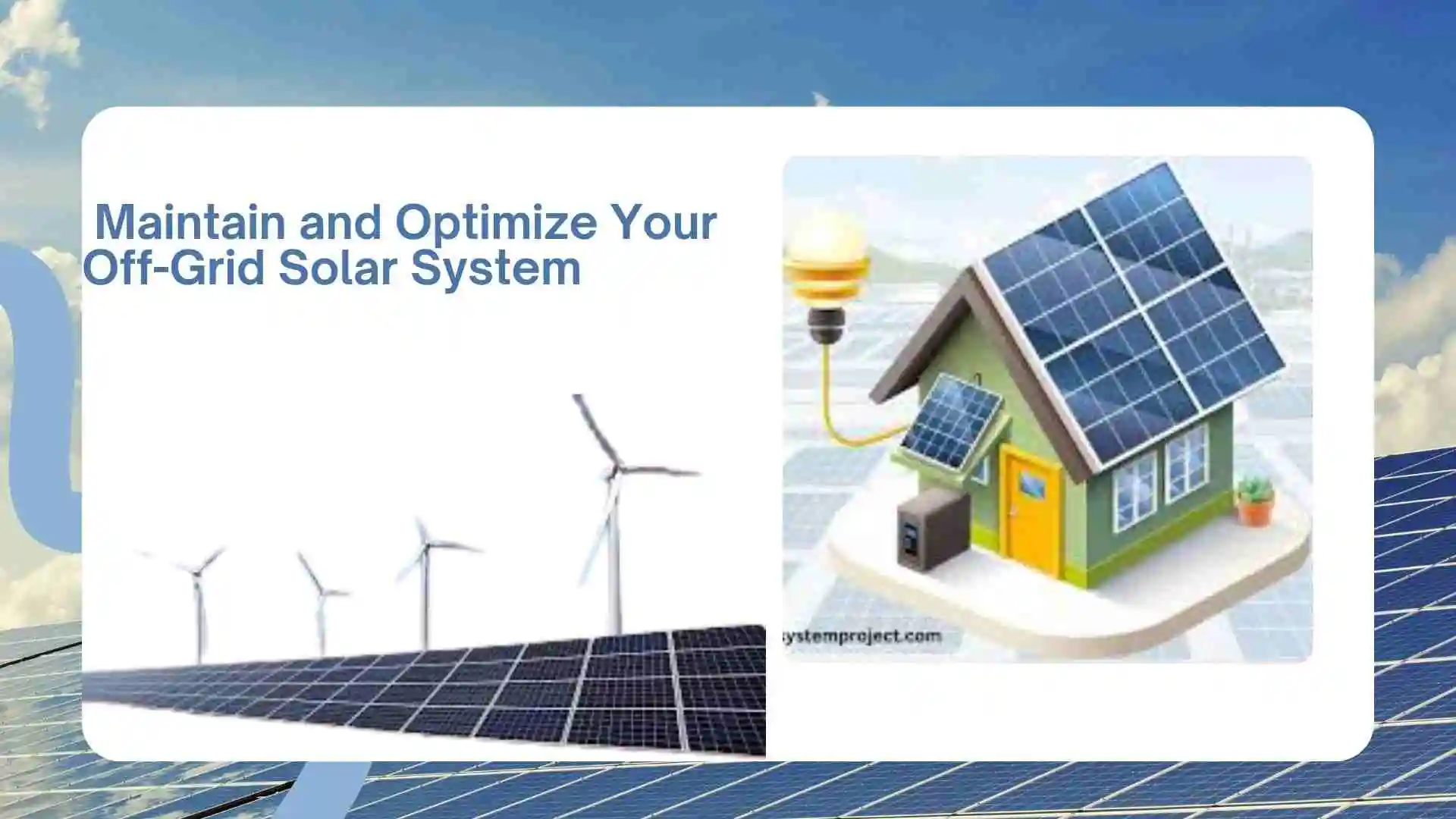Ultimate Guide to Off Grid Solar Systems in 2025
In 2025, off grid solar systems are gaining popularity as more people seek energy independence and sustainable solutions. These systems provide an alternative to traditional grid-based electricity, especially in remote areas or locations with unreliable power supplies. With advancements in solar technology, off grid systems are becoming more efficient, affordable, and easier to install, making them a viable option for both homes and businesses.

This guide explores everything you need to know about off-grid solar systems, including how they work, their benefits, and the latest technologies available today. Whether you’re considering a small off grid setup for your cabin or a larger system for your business, this comprehensive guide will help you make an informed decision.
If you want to know complete details about on grid then please visit On Grid Solar System.
Understanding Off Grid Solar Power Systems
An off grid system is a solar power setup that operates independently of the public electricity grid. It generates electricity using solar panels and stores it in batteries for later use. This system is ideal for remote areas where connecting to the power grid is not feasible or practical. Off-grid solar systems provide complete energy independence, meaning there is no reliance on the grid or utility companies.
How Does an Off Grid Solar System Work?
An off grid solar works by converting sunlight into electricity through solar panels. The electricity is stored in batteries to be used when needed, such as at night or during cloudy weather. A charge controller ensures the batteries are charged correctly and prevents overcharging. The system may also include an inverter to convert the stored DC (direct current) energy into AC (alternating current), which is used to power appliances and devices.
Benefits of Off-Grid Solar Systems in 2025
In 2025, off grid solar sys offer several advantages:
Key Components of an Off Grid Solar System
An off-grid solar system uses solar panels, batteries, inverters, and charge controllers to generate and store energy. Solar panels capture sunlight and convert it into electricity. Batteries store the energy for later use, while the charge controller manages the flow of power. The inverter changes the stored energy into usable electricity.

Each component is essential for ensuring your system works efficiently and provides power when you need it most. The size and type of each part depend on your energy needs and location.
Solar Panels – The Heart of Off Grid Solar Power
Solar panels are the core component of any off grid solar power. They capture sunlight and convert it into electricity. The number of solar panels needed depends on the energy consumption of the user, location, and system design.
Types of Solar Panels:
| Type | Efficiency | Cost |
|---|---|---|
| Monocrystalline | 18-22% | High |
| Polycrystalline | 15-18% | Moderate |
| Thin-Film | 10-12% | Low |
Batteries for Off Grid Systems
Batteries store the electricity produced by the solar panels. They are crucial for off grid systems, allowing users to access power during the night or cloudy days. The size and type of battery depend on the system’s energy needs.
Popular Battery Types:
Planning and Installing Your Off Grid Solar System
Planning an off-grid solar system involves understanding your daily energy needs. You need to calculate how much power you use and determine the number of solar panels and batteries required. Once you have this information, you can choose the right components for your setup.
Installing the system involves placing the panels in a sunny spot, usually on the roof, and connecting them to the charge controller. The controller is then linked to the batteries and inverter. The setup should be done carefully to ensure the system works properly.
How to Size an Off Grid Solar System for Your Home or Business
Sizing an off grid system involves calculating your energy consumption and determining how much power you need to store in batteries. Here’s a simple step-by-step guide:
| Appliance | Power (W) | Usage Hours | Total Energy (Wh) |
|---|---|---|---|
| Refrigerator | 150 | 24 | 3,600 |
| LED Lights | 10 | 6 | 60 |
| Laptop | 50 | 5 | 250 |
| Fan | 75 | 8 | 600 |
Step-by-Step Guide to Installing Off Grid Solar Power
Common Mistakes to Avoid When Setting Up an Off Grid Solar System
Cost of Off Grid Solar Systems Worldwide 2025
The cost of off-grid solar systems has dropped over the years due to advances in technology. Prices can vary depending on the type of panels, battery size, and system complexity. While high-efficiency panels and larger batteries are more expensive, they provide more power and storage.
By 2025, the cost of installing off grid systems is expected to continue falling. Many remote areas now have access to affordable solar energy, helping reduce reliance on traditional power grids.
Factors Affecting the Cost of Off Grid Solar Power

Off Grid Solar System vs. Grid-Tied Systems – Which Is Better for You?
Off-grid solar systems offer total independence from the power grid, making them ideal for areas without reliable electricity access. However, they come with a higher upfront cost and require regular maintenance. They also need more battery storage to provide power during cloudy days or at night.

Grid-tied systems are often more affordable and easier to maintain. They allow you to sell excess energy back to the grid and don’t require battery storage. If you live in an area with stable grid power, a grid-tied system might be a better option.
Pros and Cons of Off-Grid Solar Systems
| Pros | Cons |
|---|---|
| Complete energy independence | Higher initial investment |
| No monthly electricity bills | Requires sufficient storage |
| Environmentally friendly | Maintenance and monitoring required |
When Is a Grid-Tied System Better Than Off Grid?
A grid-tied system is a better option when:
How to Maintain and Optimize Your Off-Grid Solar System
To keep your off grid system running smoothly, regular maintenance is key. Clean the solar panels every few months to remove dust and dirt. Check the battery connections and ensure the system is charging properly.

Monitoring the system’s energy output is also important. If the system isn’t producing enough power, it may be time for an upgrade. Regular maintenance will help extend the lifespan of your system and keep it performing well.
Regular Maintenance Tips for Long-Term Performance
How to Extend the Life of Your Off-Grid Solar System
Latest Innovations in Off Grid Solar Technology (2025)
Solar technology is improving every year. In 2025, bifacial solar panels are becoming more popular. These panels capture sunlight from both sides, which increases energy production. New solid-state batteries are also helping store energy more safely and efficiently.
These innovations make off grid systems more efficient and cost-effective. As technology improves, off grid systems will continue to provide better value and performance.
Cutting-Edge Solar Technologies in 2025
In 2025, solar technology continues to evolve. New, more efficient solar panels, such as bifacial solar panels, are capable of capturing sunlight from both sides, increasing energy production. Additionally, solar trackers that follow the sun throughout the day are becoming more common.
Energy Storage Solutions for Off Grid Systems
New battery technologies, such as solid-state batteries, promise to increase energy storage efficiency and lifespan. These batteries are safer, more compact, and have higher energy density than traditional lead-acid or lithium-ion batteries.
The Future of Off-Grid Solar Systems
Off grid systems are expected to be more affordable and efficient in the coming years. Advances in AI and smart technology will help optimize energy use based on weather conditions and energy consumption patterns. By 2035, off grid solar will likely be a mainstream choice for both homes and businesses.
These systems will play a key role in the global shift toward renewable energy. They will help reduce dependence on fossil fuels, especially in areas that don’t have easy access to traditional power grids.
How Off Grid Solar Will Evolve in the Next Decade
Off-grid solar systems are expected to become even more affordable and efficient by 2035. With advances in AI and machine learning, energy management systems will automatically adjust based on weather forecasts, energy usage patterns, and battery health. This will make off grid systems even more user-friendly and efficient.
The Role of Off Grid Solar in Global Sustainability Efforts
Off grid systems play a crucial role in the transition to a sustainable energy future. They provide clean energy to remote and underserved areas, reducing reliance on fossil fuels. As the world shifts towards renewable energy, off grid solar will be an essential part of the solution.
Conclusion
Off grid solar systems are revolutionizing the way we approach energy, offering a sustainable and cost-effective solution for those seeking independence from the traditional power grid. With advancements in technology and falling costs, off-grid solar systems are becoming more accessible and efficient, making them a viable choice for homes, businesses, and remote areas.
As we move into 2025 and beyond, these systems will continue to evolve, with improved solar panels, battery storage, and energy management solutions. Whether you’re looking to reduce your carbon footprint, cut energy costs, or ensure a reliable power source, off grid solar power offers numerous benefits. Understanding how these systems work, their components, and their costs can help you make an informed decision and take the first step towards a sustainable energy future.
